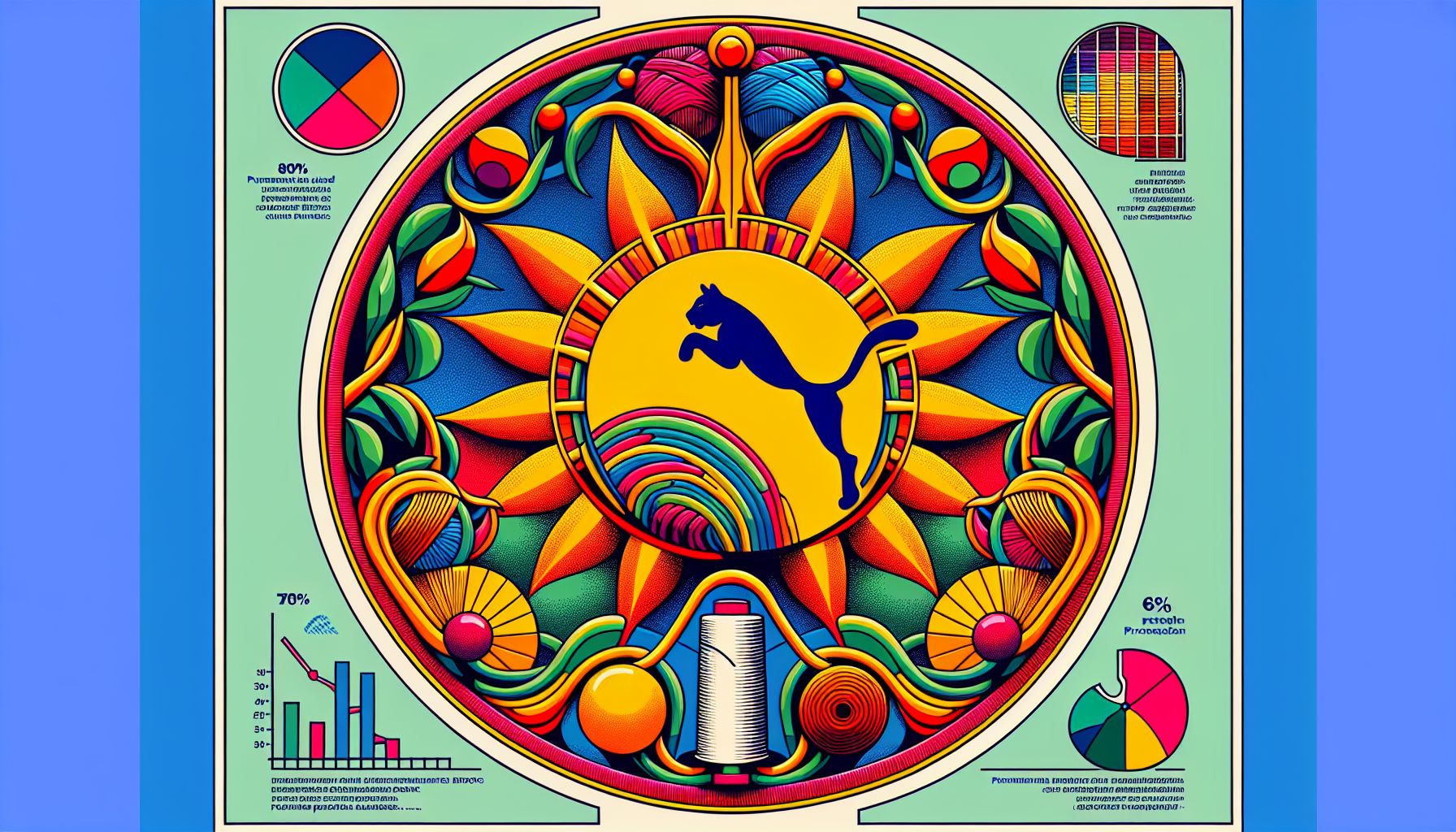Puma Leads Sustainability Race: Achieves Top Tier in Global Material Change Index

Herzogenaurach, Tuesday, 26 November 2024.
In a significant leap forward, Puma has secured a position among just 11 companies worldwide in the prestigious ‘Leading’ category of the Material Change Index. The sportswear giant’s commitment to sustainable materials and circular production practices has elevated them from their 2023 ranking, demonstrating remarkable progress in their environmental initiatives. With 80% of their products now using preferred fibers and 65% of polyester coming from recycled materials, Puma’s strategy showcases how major brands can successfully balance commercial success with environmental responsibility. This achievement particularly stands out as it comes alongside their ambitious Vision 2030 sustainability goals, marking a transformative period in the company’s environmental journey.
Puma’s Strategic Shift in Material Use
Puma, based in Herzogenaurach, Germany, has demonstrated a robust commitment to sustainability, which has earned them a top spot in the Material Change Index by Textile Exchange. This index is a peer-to-peer comparison initiative that evaluates companies on their progress in sourcing sustainable materials and advancing circularity. In 2024, Puma was recognized among only 11 companies to reach the ‘Leading’ category, a step up from their 2023 ‘Scaling’ tier status. This recognition highlights Puma’s strategic shift towards integrating sustainable practices in their material sourcing, aligning with global environmental goals, and setting an example for the fashion industry.
Commitment to Circularity and Sustainable Practices
Puma’s progress is evident in their substantial use of recycled materials across their product lines. By 2023, 99.7% of their leather came from Leather Working Group-certified tanneries, and 99.2% of their cotton was either certified or recycled. Their circular initiatives, such as the RE:FIBRE program, have been pivotal in this success, enabling the production of millions of football jerseys from textile waste. This approach not only reduces waste but also lowers the need for virgin materials, significantly cutting down on the environmental footprint associated with traditional manufacturing processes.
Vision 2030: Future Targets and Ambitions
Looking ahead, Puma’s Vision 2030 sets even more ambitious targets. They aim to reduce their scope one and two greenhouse gas emissions by 90% from 2017 levels by 2030, with a 33% reduction target for their supply chain emissions. These goals are part of a broader strategy that includes increasing the use of renewable energy and ensuring that 100% of polyester materials are recycled by the end of the decade. Puma’s Chief Sourcing Officer, Anne Laure Descours, emphasizes the importance of these initiatives, stating that the company is committed to being ‘Forever.Better.’ by aligning their business practices with environmental sustainability.
Implications for the Fashion Industry
Puma’s achievements in sustainability set a benchmark for the fashion industry, demonstrating that environmental responsibility can coexist with business growth. Their proactive approach to tackling climate change through material innovation and strategic planning not only boosts their brand equity but also inspires other companies to follow suit. The company’s ongoing efforts to enhance transparency and engage with younger audiences on sustainability issues further solidify their leadership in green innovation. As the industry moves towards a more sustainable future, Puma’s strategies could serve as a blueprint for others aiming to make a significant environmental impact.

